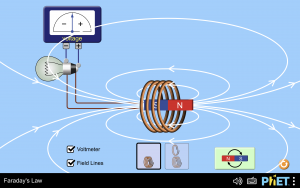This week, we modified the block diagram slightly, since we identified that both experiments will be gathering voltmeter data that will be sent to our hardware bridge, which will then be accessed by the web app via a MySQL server. Furthermore, we developed schematics of the Faraday’s Experiment and the Ampere-Maxwell Experiment. The wireframe for the web application was also developed, along with some pages of the web application itself, and a 3D model of the booth was made. Our schedules remain unchanged but the Gantt chart was updated to reflect the assignment of each task to a certain individual for more clarity.
Risks and Risk Management
We are still working on confirming the hardware bridge. We have ordered a Wifi-enabled Arduino and plan to use that to take in voltmeter readings and direct that to the MySQL server. We intend to test this once the Arduino is delivered. If the Arduino is unable to send the voltage data to a MySQL server, we will consider alternatives such as using a TCP/IP Voltmeter device which is slightly more costly ($60) but guarantees voltmeter readings being fed into a MySQL database.
Changes to the Existing Design
After discussing with Professor Sullivan about transmitting data read by sensors (e.g. voltmeters) to the database for the web app, we decided for now we can just send the data to a local machine through wired connection, instead of sending the data to the cloud, such as AWS, to simplify the design and focus more on the core of the project. The schedule, however, wouldn’t actually change because we will spent the time allocated for implementing the wireless connection on developing wired connection.
Principles of Engineering, Science, and Math
Idea generation and selection: We came up with a few viable experiments to demonstrate Faraday’s and Ampere’s laws, and we decided on the ones that most align with our goal of making the system instructive yet simplistic, after considering the pros and cons of each option.






